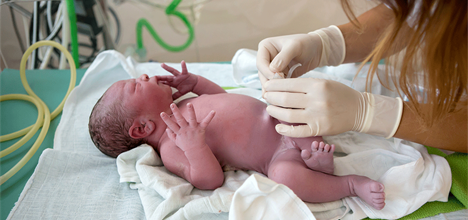While it might sound alarming at first, understanding this condition and its implications can ease your worries and help you take the right steps for your child’s health.
One such issue that might arise is an undescended testis. As parents, we often face numerous health concerns regarding our children.
What is an Undescended Testis?
An undescended testis in children, or cryptorchidism, occurs when one or both of a male infant’s testicles fail to move into the scrotum before birth. This is a common condition, affecting about 3% of full-term and 30% of premature male infants. Normally, the testicles develop in the abdomen and descend into the scrotum during the last few months of fetal development. When this descent doesn’t happen, it results in an undescended testis.
What are the signs or symptoms of an Undescended Testicle
If you cannot see or feel a testicle in the baby’s scrotum, then this may be due to an undescended testicle.
When the foetus is still developing, testicles are formed inside the abdomen.
In normal development of the foetus, the testicles descend from the abdomen, into the scrotum, through the tube-like passage, into the groin (inguinal canal).
The above process, happens in the last couple of months of normal foetal development. When this process is halted or delayed, it leads to the condition called Cryptochordism or Undescended Testicle.
Signs and Symptoms
The primary indication of an undescended testis is the absence of one or both testicles in the scrotum. During a routine newborn physical exam, a healthcare provider can usually detect this condition. If your child has cryptorchidism, you might notice:
– One or both testicles not palpable in the scrotum.
– An empty scrotum or one that appears smaller than usual.
Potential Complications
While undescended testis often resolves on its own within the first few months of life, it can lead to several complications if left untreated:
– Infertility: Testicles need to be in the cooler environment of the scrotum to produce sperm. Prolonged abdominal temperature can affect sperm production.
– Testicular Cancer: Men with a history of undescended testis have a higher risk of testicular cancer, even if the condition is corrected surgically.
– Hernias: An undescended testicle is often associated with an inguinal hernia.
– Testicular Torsion: This is a painful twisting of the testicle, cutting off its blood supply, which is more likely in an undescended testicle.
Diagnosis and Treatment
Diagnosis
A thorough physical exam is usually enough to diagnose an undescended testis. In some cases, imaging tests like ultrasound or MRI might be used to locate the testicle if it’s not palpable.
Treatment
Treatment options depend on the child’s age and the severity of the condition. The primary treatment is a surgical procedure called orchiopexy:
– Orchiopexy: This is the most common treatment and involves moving the undescended testicle into the scrotum and fixing it in place. It is typically performed between 6 months and 1 year of age to reduce the risk of complications.
– Hormonal Therapy: In some cases, hormones like hCG (human chorionic gonadotropin) may be used to stimulate the testicle to descend, though this is less common and not as effective as surgery.
Long-Term Outlook
With early diagnosis and appropriate treatment, most children with an undescended testis can lead healthy, normal lives. They can have normal fertility and a significantly reduced risk of testicular cancer compared to untreated cases.
Saline Testicular Prosthesis treatment, which gives the scrotum a normal appearance, may be considered, if one or both testicles are missing or did not survive post surgery.
An Endocrinologist or a hormone specialist may be referred if the child does not have even one testicle which is healthy.
Endocrinologist helps with future hormone treatments that are necessary to bring about puberty and physical maturity.
Results
Orchiopexy, mostly has a 100% success rate. Post surgery, the fertility for males with Undescended Testicle is nearly normal, however, for males with two Undescended Testicles, the chances are 65%.
While surgery might reduce the risk of testicular cancer, it still does not eliminate it.
Lifestyle changes and remedies at home for Undescended Testicles:
It is important to ensure that the testicles are developing normally, even after the child’s surgery. Being aware of the development of your son’s body and checking the position of his testicles regularly, helps him in the long run. This can be done while changing the diaper or while bathing him.
Talk to your son about the physical changes that are about to happen, when he reaches puberty.
Teach and encourage him to check his testicles regularly, as self-examination can help with the early detection of tumors.
How to cope with and support your son with Undescended Testicle Your son may be uneasy or sensitive about looking different, especially if he has to change his clothes in front of his friends or classmates, in a sports or in a school drama changing room. Guide him with the following tips, to help him deal with anxiety
When to See a Doctor
If you notice that your child’s testicles are not in the scrotum or if you have concerns about their development, it’s important to consult a pediatrician. Early intervention is key to preventing potential complications.
Conclusion
An undescended testis, though concerning, is a treatable condition with a good prognosis when addressed promptly. Regular check-ups and awareness can ensure that your child receives the necessary care and lives a healthy, happy life. Always consult healthcare professionals for advice and treatment tailored to your child’s needs. By staying informed and proactive, you can ensure the best outcomes for your child’s health and well-being.
 :
https://www.pedsurgerydelhi.com
:
https://www.pedsurgerydelhi.com












